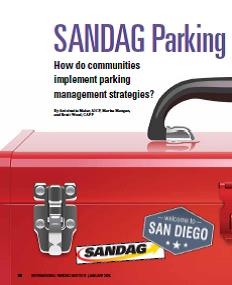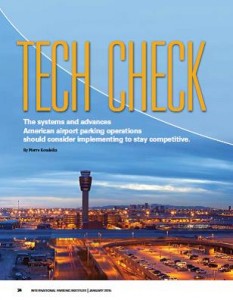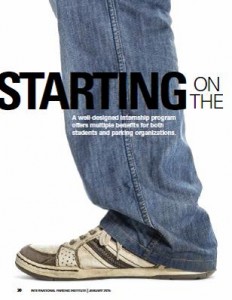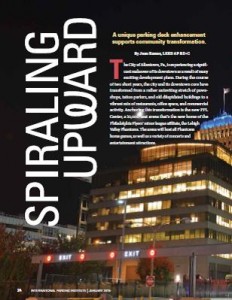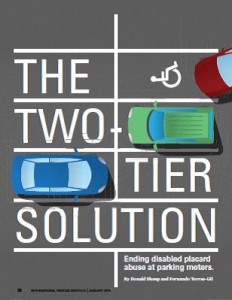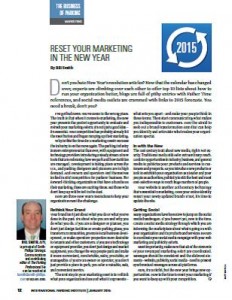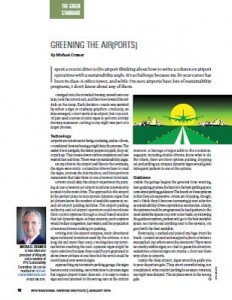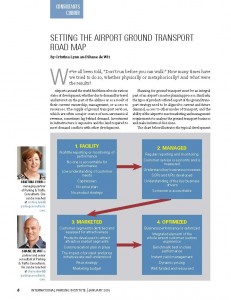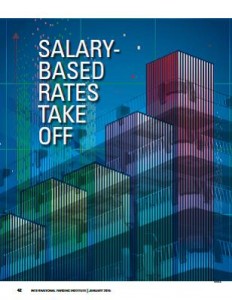 By Melinda Scott Anderson, CAPP
By Melinda Scott Anderson, CAPP
Instead of employing new and exciting rate strategies designed to maximize revenue and space utilization or simply continuing with proven strategies, sometimes we are required to go in a direction that runs counter to our understanding of best practices in the industry and even our strongest recommendations regarding best course of action for our agency or institution.
Facing Challenges
After more than 35 years of relying on geographic-based employee parking rates (rates set according to the location of the parking facility), with all customers paying the same price for the same level of convenience and service, the decision was made at the Medical University of South Carolina (MUSC) to convert to a salary-based parking fee structure.
MUSC is an academic medical center located in the historic city of Charleston, S.C. MUSC’s 95 buildings occupy 82 acres in the city’s medical complex, which also includes the VA hospital, Charleston County medical offices, and a large private hospital. MUSC’s six colleges—medicine, nursing, dental medicine, pharmacy, graduate studies, and health professions—have an enrollment of 2,777 students.
The university’s medical center sees more than 1.2 million outpatients and admits almost 36,000 patients to its four inpatient facilities (709 beds plus 58 neonatal care beds) each year. The university and medical center employee population totals 12,749 and is comprised of research and clinical faculty and medical, research, and university staff.
The MUSC parking system is self-supporting, depending entirely on user fees to operate, maintain, and grow the system and retire debt. Albeit at a rate well below market, employees and students have paid for their personal parking since the formalization of the campus parking system more than 35 years ago. While the medical center picked up the parking tab for its patients for many years, it gradually moved to a fee-based rate structure for inpatients and outpatients. Today, every patient or visitor who parks with us—approximately 800,000 annually—pays at least part of his parking fee.
When the national economy fell on hard times in 2008, out of concern for our employees, a planned series of pre-approved employee parking rate increases was discarded. The absence of rate increases for a number of years and the addition of new debt service for a recently-completed 1,600-space parking garage caused the parking system to fall into deficit mode. During this time, the university began examining its budget methodology and started its move to a new budget model: responsibility-centered management (RCM). RCM budgeting moves the responsibility for resource allocation for university and hospital general services (including parking) from central administration to the main operating divisions of the institution—the six colleges and their deans.
Responsibility for the parking deficit then moved to the six colleges. In RCM meetings and discussions held over many months, the six colleges and medical center were faced with two choices: fund the parking deficit themselves based on a demographic formula or implement an employee rate-increase plan that would eliminate the parking revenue shortfall within a few years. The decision was made to increase rates; the only question was what basis to use for an increase. Two pricing approaches were considered for moving employee rates to system break-even over a five-year period:
- Geographic-based/desirability of parking location.
- Salary-based/ability to pay.
Parking management believed then and now that parking spaces are no different than other goods and services we purchase. As consumers, we make choices based not only on what is available but on the cost and the value to us of the good or service. We reasoned that the parking spaces cost the same to provide, so why should one person pay more or less than another for parking in the same facility?
We believed (and still do) that given the university’s waiting list assignment system and without the economic influence of a standard rate established in accordance with demand for the location, eventually, the number of lower-salaried employees parking in the system would be greater than the number of higher-salaried employees, tilting the revenue scale unfavorably.
Because we are accustomed to responding to pushback, it was perhaps the least of our concerns. Still we believed that a salary-based fee structure would raise significant pushback from faculty and higher-paid staff.
Using benchmark data from other institutions that use a salary-based system, we presented to the committee our largely-unfavorable findings, along with the benefits of continuing the existing rate plan based on higher rates for more desirable locations. We also presented a number of salary-based and geographic-based pricing scenarios.
Moving from a pricing system that was the same for everyone to a system that would have multiple prices posed significant operational challenges:
- Many clinical faculty and some employees are paid from more than one source. Charging the correct price to thousands of employee parkers would require accurate capture of total income.
- Correct pricing would also require a method to inform the parking system when salaries changed and employees moved from one salary tier to another.
- Revenue projections would become less reliable because the revenue each space would generate would vary.
We made our chiefs aware of the significant amount of work the change would require for parking management, human resources, information technology, and payroll services, but we didn’t allow these challenges to enter into the discussion. The changes could be made, and if we expressed undue concern over the difficulties, it would only weaken our credibility, objectivity, and professionalism in the eyes of the committee members.
Combining Approaches
The decision by the RCM committee was to employ a combination of the two approaches:
- The fee structure would continue to recognize the greater convenience of parking in the employee locations closest to major work sites by continuing price differential by parking zone.
- There would be four salary tiers for each zone.
- Employees in the highest salary tier would go straight to market rate the first year—a 118 percent increase.
- Employees in the lowest salary tier would see a modest increase of 5.5 percent.
- The two middle tiers would increase by 14.5 and 21.8 percent respectively.
- The rate change would be effective in July 2013.
- Increases would be scheduled for each tier for the following four years to achieve break-even in FY2018.
- Each year during budget preparation, university administration would review the fiscal status of the parking system and the need to implement the rate increase authorized by the board of trustees.
In the end, changing rates based on salary levels was a philosophical issue. The reasoning of the RCM committee was that while rate increases could not be avoided, lower-paid employees should be protected from substantial increases. This fact, combined with balancing the parking budget, could only be achieved through a salary-based system.
Collaboration
When the decision was made for a salary-based fee structure, the parking management department signed on without reservation. Changing to a tiered rate structure required collaboration with university and hospital departments including information technology, payroll, and human resources groups. During a six-month period, we worked through all the implementation issues and hit the implementation date of July 1, 2013.
A piece of the implementation process was to change approximately 700 clinical faculty members from third-party pay (faculty practice) to self-pay by payroll deduction. To our surprise, we received only a handful of complaints from faculty members about having to start paying for their own parking. A second surprise was that about a dozen faculty members cancelled their parking. For one reason or another, they really didn’t need the parking or only needed it occasionally. Now that they were being required to pay, they thought better of it. It was a financial loss to us because we were paid twice for these spaces: once by the person using it (assigned through oversell capacity) and once by faculty practice for the faculty member to whom it was assigned but didn’t use it. Now, we were only being paid once. But it wasn’t a significant financial loss, and it was refreshing to see what happens when “free” is taken out of the parking equation.
Benefits
Other benefits to parking have come from the RCM budget exercise and the decision about parking rates:
- Increased recognition and respect for the parking department. Key administrators and high-level leadership became better informed about parking’s contributions and nuanced complexities—some had not been at all informed—through our presentations to the committee about parking’s operations, costs, service levels, effectiveness, efficiency, revenue, and overall contribution to the MUSC enterprise.
- Change in attitude about paying for parking. Parking fees for clinical faculty had been paid by the faculty practice. Also, some departments paid for some of their faculty and a few staff members. Nobody wants to pay for parking, and the attitude of most employee parkers is that if they must pay, all should pay. Those who are the most able to pay should not have their fee paid for them. As a result of the colleges’ adoption of the RCM budget model and decisions about the parking rate structure, there has been a beneficial ripple effect across the university and medical center, resulting in payment-by-others being eliminated in all but a handful of cases.
- New and increased sense of partnership and teamwork. Both the decision-making process and the implementation of the new rate scheme gave us the opportunity to work closely with university and hospital units on a project that affected all employees. We made discoveries that led to solutions that were better than we had anticipated, and our relationships were enhanced by greater mutual understanding and respect.
Good Leaders, Good Followers
The jury is still out on the longer-term effects of the salary-based fee structure and our concerns remain, but for now, benefits outweigh concerns. We put concerns aside because there are times when leaders must be followers. Now is that time for us. No grumbling or complaining about the lack of wisdom and understanding of others. No shifting of responsibility to senior leadership when we are sitting down with a customer who disagrees with the decision. No negative comments even when talking privately to colleagues who understand parking. We take responsibility for the decision and work for success of the program.
Melinda Scott Anderson, CAPP, is director of the office of parking management at the Medical University of South Carolina. She can be reached at andersme@musc.edu or 843.792.2597.

